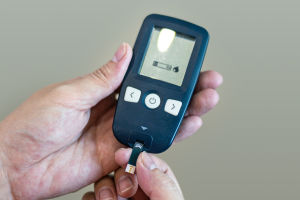
If you've been dealing with blood sugar ups and downs, or you're going through medical treatments that mess with your glucose levels, don't worry—we're in this together.
Today, let's talk about how we can manage blood sugar naturally through what we eat, without feeling stressed or overwhelmed.
Why food affects our blood sugar
So many things mess with blood sugar—stress, medication, physical activity, or even cancer treatment. That's why keeping our glucose in check is a big part of staying healthy. The good news is: what we eat can really help.
We might hear tons of diet advice from different places. But the truth is, the best eating plan is personal—it depends on our health, treatments, and what foods we like. There's no one-size-fits-all diet.
That said, the American Diabetes Association does offer some helpful general tips. These can guide us in keeping our blood sugar stable, maintaining a healthy weight, and even lowering heart disease risk. A balanced diet full of nutrients is key.
Let's talk about carbs
There are three major nutrients in food:
– Carbohydrates (aka carbs)
– Fats
– Proteins
All three give us energy, but carbs are the easiest for our body to turn into glucose. That's why carbs affect our blood sugar the most.
Some carbs spike blood sugar fast, others do it more slowly. The fast ones can lead to sugar highs and crashes, which isn't fun or healthy. Managing these swings helps prevent both high blood sugar (hyperglycemia) and low blood sugar (hypoglycemia).
If you're on diabetes meds
Important note: if you're taking diabetes meds, always talk to your doctor or diabetes educator before cutting carbs. Reducing carbs too much could make your blood sugar drop too low, which can be dangerous.
Choosing carbs wisely
Carbs aren't the enemy—they're actually a great source of energy and nutrients. The key is to pick better kinds of carbs and eat them in smart amounts.
Here are some examples to keep in mind:
Foods with carbs
– Milk, yogurt, ice cream
– Fresh fruits, dried fruits, fruit juice
– Bread, cereal, rice, pasta
– Beans, lentils
– Starchy veggies like potatoes, corn, peas, pumpkin
– Sugary drinks like soda, sweetened tea
– Desserts like cake, candy, cookies, chips, pretzels, popcorn
Foods without carbs
– Meat and poultry (like meta, chicken)
– Fish and seafood
– Cheese
– Eggs
– Butter and oils
– Non-starchy veggies like tomatoes, peppers, spinach, kale, broccoli, cauliflower
Fiber is your friend
Fiber helps slow down how fast sugar gets into your bloodstream. So when we eat high-fiber carbs, our blood sugar doesn't spike as fast.
Look for foods with at least 3g of fiber per serving. Check the nutrition label—fiber is listed under “dietary fiber.” The more fiber, the better for our blood sugar.
Foods high in soluble fiber
Soluble fiber turns into a gel in our belly and helps slow down digestion—great for glucose control. You'll find it in:
– Oats
– Beans and peas
– Apples
– Citrus fruits
– Barley
Try including some of these every day:
– ¾ to 1 cup of multigrain cereal
– ½ cup of cooked beans or lentils
– 3 cups of air-popped popcorn
– One medium potato (regular or sweet)
Cutting carbs—without cutting them all
If your blood sugar is high, lowering your carb intake at meals can help bring it back down. Just don't cut out carbs completely—especially if you're using insulin. That can cause low blood sugar and make things worse.
Here are some small swaps we can make:
– Pick one main carb per meal instead of two (like just rice or bread, not both)
– Eat non-starchy veggies as a bigger part of the meal
– Snack on nuts, cheese, or veggies instead of chips or cookies
– Try brown rice or quinoa instead of white rice for better fiber
Final thoughts for all of us
Managing blood sugar through food doesn't mean giving up flavor or fun. It's all about balance, better choices, and being mindful of what fuels us best.
Let's stay curious, keep learning, and support each other. If you have a go-to blood sugar-friendly meal or snack, share it with us—we'd love to hear it!


